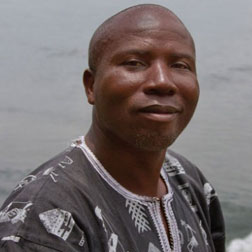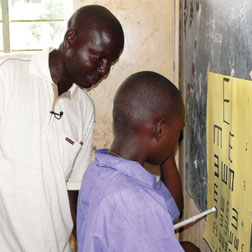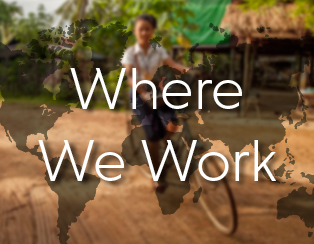UGANDA
Initiative for TDMS and PIASCY(UNITY)
With nearly 56 percent of the population under the age of 18 and an HIV/AIDS pandemic and conflict that has left nearly 2 million children orphaned, Uganda faces significant challenges to achieving universal primary education. In conflict-affected areas, instability makes it difficult for children to attend school and for teachers to provide quality education. In other areas of the country, schools are overcrowded and the quality of education is poor.
Supporting the Ministry of Education and Sports, Creative implemented the Ugandan Initiative for Teacher Development and Management System and the U.S. Presidential Initiative on AIDS Strategy for Communication to Youth, or UNITY. The program was part of the USAID-funded Basic Education/Linkages to Education and Health initiative.
The program had four aims: to improve teacher professional development; expand implementation of Presidential Initiative on AIDS Strategy for Communication to Youth; increase parental and community participation in education; and implement the government’s education policy agenda.
Through the program, more than 300,000 guides for addressing HIV/AIDS stigmatization and discrimination were distributed to teachers in 13,248 primary schools and another 300,000 copies were distributed to 3,256 secondary school. The program also supported health education and training for teachers. Through school management committees, parents, teachers and community members took an active role in improving school quality.
In conflict-affected Northern Uganda, UNITY launched the Revitalization of Education Participation and Learning in Conflict Areas program. This initiative reached parents, teachers, school administrators and students who had suffered through war by providing counseling and psychosocial support, peace education, leadership and performing arts programs girls’ education opportunities.
The UNITY program worked with the Ministry of Sports and Education to develop a new and improved system for teacher recruitment and training and a national curriculum based around teaching children in their local languages. More than 230,000 reader books in eleven local languages were distributed to more than 219.000 schools. The new local-language curriculum raised literacy and math skills and moved Uganda further along in its goal to provide quality universal primary education to its children by 2015.
FEATURED NEWS

Lawrence Ndagije –A Self-Starter
As a first time traveler to Uganda, one is first struck by the tropical sun’s brightness and the thousands upon thousands of people busily engaged in performing their daily tasks. Learn More...

UGANDA: In Collaboration with UNITY, MOES Set to Launch Special Needs Education Policy
Children often overcome many obstacles to learning in a developing country such as overcrowded classrooms, not having the latest textbooks or access to technology or challenges at home. Learn More...


